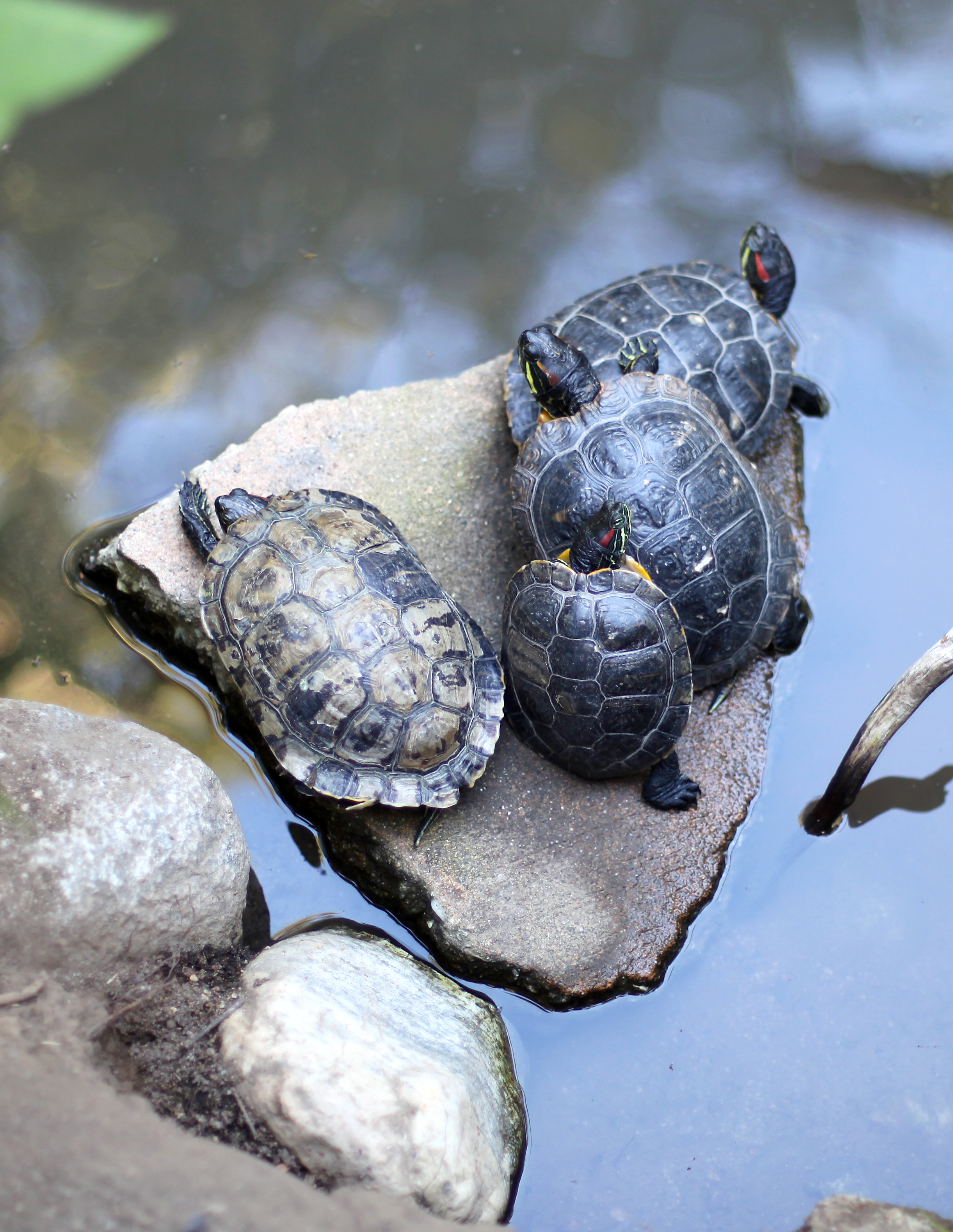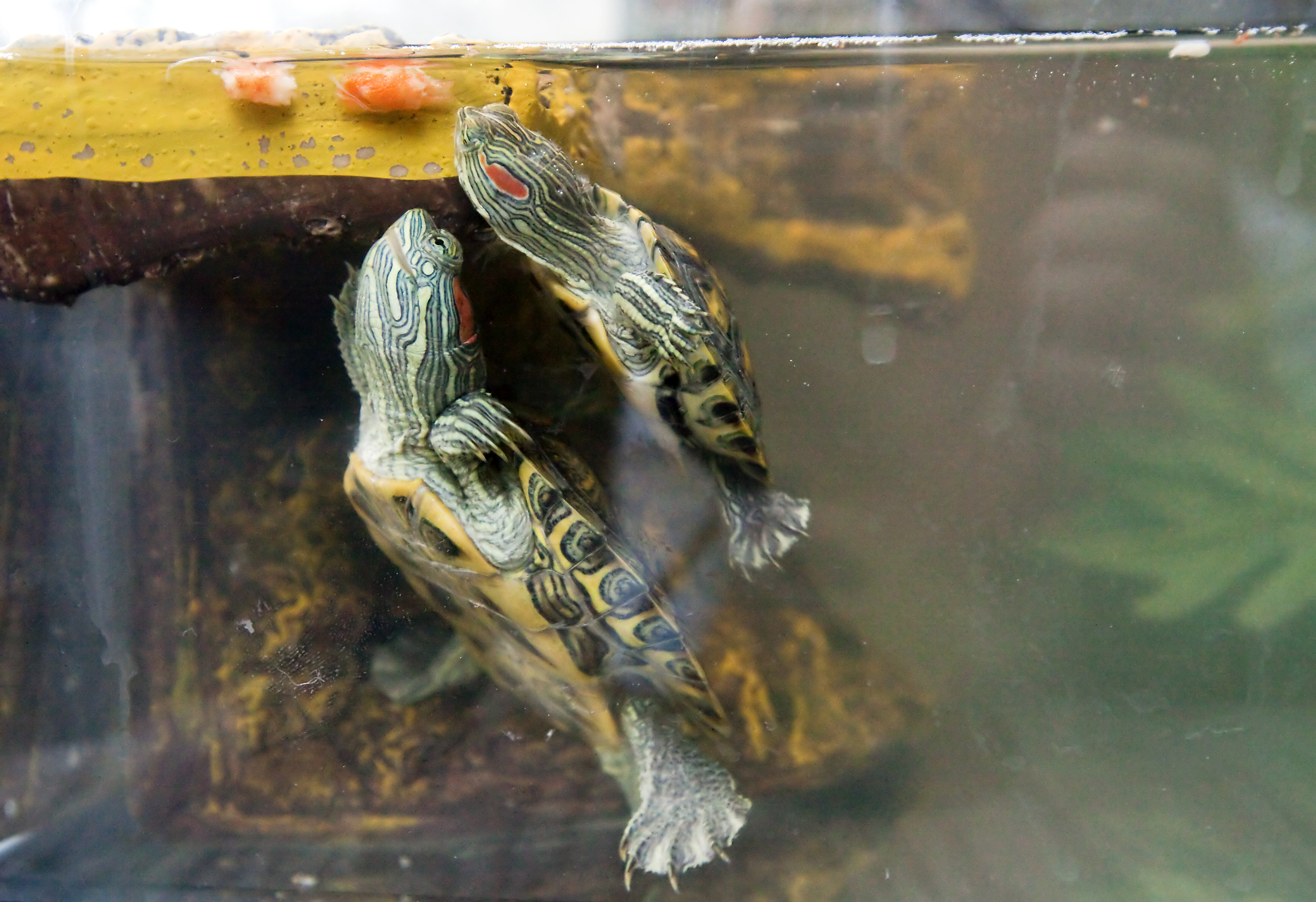
In recent years, the turtle population has doubled in size, from about 35 in 2007 to nearly 60 today.
Red spots accent the calm surface of a man-made stream, as about 20 turtles poke their heads out of the murky water.
One on top of the other, they float, swim and bask in the sun of the hottest day on record in Los Angeles.
An outsider wouldn’t guess that these red-eared slider turtles don’t belong in the Mildred E. Mathias Botanical Garden at UCLA.
For as long as garden manager and horticulturist Joan Muench can remember, there have been at least 14 to 15 of the reptiles living in the stream. In 2007, the stream was emptied for maintenance in the gardens, and about 35 turtles were temporarily housed in a small swimming pool.
But in recent years, the population has doubled to nearly 60 turtles.
Now, it is getting to the point where there is not enough space in the small stream, she said.
The overcrowding may be a contributing factor in a rise in disease seen in many turtles, including respiratory infections and vitamin deficiencies, said Monique Vaillancourt, a nurse practitioner at the Arthur Ashe Student Health and Wellness Center.
She learned to treat some easily recognizable ailments because of the high price of veterinary services.
“People really underestimate the care and the setup it takes (to have a turtle),” Vaillancourt said. “They’re high-maintenance pets.”
Vaillancourt separates the turtles too small to live in the stream into a 40-gallon tank for the smallest turtles and a 200-gallon tank for midsized ones. Once they are 5 inches in diameter, they are fit to live with the rest of the population.
She has two other “infirmary” tanks for the sick and recovering reptiles.
Muench attributed the population’s dramatic increase to people dumping their unwanted pets in the stream.
“I think people just come visit the garden and see the other turtles,” she said. “You can’t police the stream all the time.”
Vaillancourt said the turtles can get larger than most people have space to keep as pets, and it can lead to abandonment.
“People buy (the turtles) when they’re small and tiny, thinking they’re going to stay that way,” Muench said.
The U.S. Geological Survey states the red-eared slider turtle is an invasive species to the L.A. area, with abandonment rates highest in the late 1980s and early ’90s, coinciding with the popular “Teenage Mutant Ninja Turtles” television show.
Greater challenges arise when considering relocation of the animals.
“If there was a place to relocate, that would be nice,” Muench said. “If someone had a good home for a turtle, yes we would give it to them.”
Thumbing through a brochure about caring for red-eared sliders, Muench noted the proper enclosure, diet and environment needed for a healthy turtle.
“You really have to know what you’re doing,” she said.
